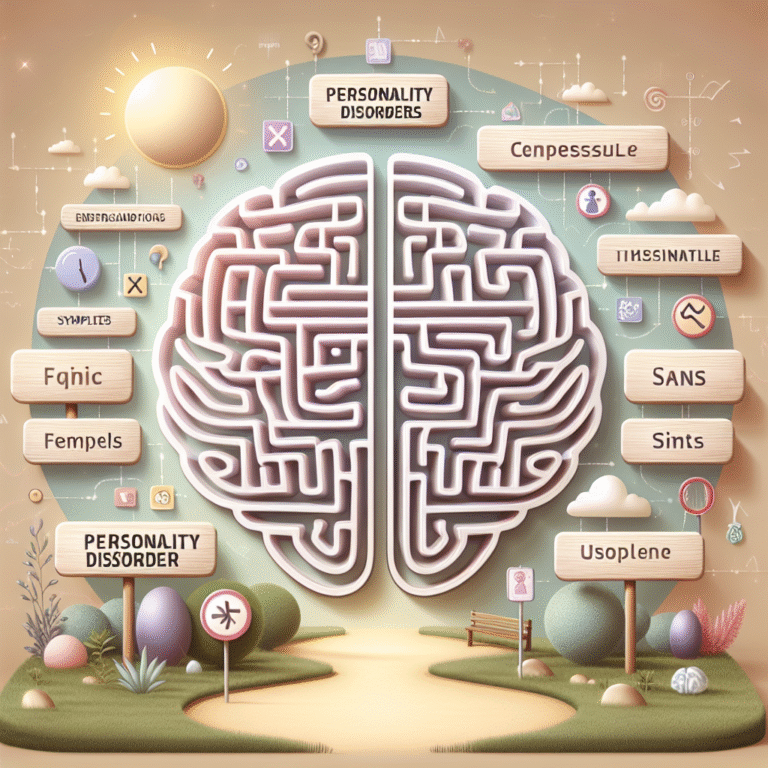
Harnessing Motivation: Psychological Insights for Achieving Your Goals
Introduction
Imagine you’re standing at the base of a towering mountain, your goal soaring above you like an insurmountable challenge. Every step you take feels heavy with uncertainty, and as you look up, sheer determination seems almost out of reach. Yet, deep within you lies the power to not only ascend but thrive during the journey. This is the essence of Harnessing Motivation: Psychological Insights for Achieving Your Goals—the secret to transforming your aspirations into tangible achievements.
Understanding motivation isn’t just about willpower; it’s about unlocking the psychological factors that fuel your drive, instill purpose, and guide your actions. In this article, we’ll explore the profound intersection between psychology and motivation, revealing insights that will empower you to surmount any obstacle in your path. Let’s take a deep dive into the mechanisms of motivation, supported by case studies, practical applications, and essential strategies to ensure your success.
Understanding Motivation: The Psychological Framework
The Nature of Motivation
Motivation can be broadly defined as the process that initiates, guides, and maintains goal-oriented behaviors. It is the energy that propels you to accomplish your tasks and aspirations. Psychology identifies two primary types of motivation: intrinsic and extrinsic.
-
Intrinsic Motivation: This refers to engaging in an activity for its own sake, driven by personal satisfaction or the joy of the task itself. For example, a painter may create art solely for the pleasure it brings.
- Extrinsic Motivation: This involves performing a task to achieve external rewards or avoid negative consequences. An employee might work overtime for a bonus, illustrating the drive fueled by external validation.
Understanding these two types of motivation—central to Harnessing Motivation: Psychological Insights for Achieving Your Goals—helps tailor your approach to goal-setting and achievement.
The Role of Cognitive Dissonance
Cognitive dissonance, a psychological phenomenon first introduced by Leon Festinger, describes the mental discomfort experienced when one’s beliefs and actions are misaligned. This dissonance can serve as a powerful motivator. For instance, if you consider yourself a healthy person but indulge in junk food, the resulting discomfort can push you to make healthier choices to restore harmony between your identity and actions.
By harnessing this principle, individuals can strengthen their commitment by aligning their actions with their values and beliefs, crucially supporting the process of Harnessing Motivation: Psychological Insights for Achieving Your Goals.
The Four Pillars of Motivation
Inspired by the works of various psychologists, we’ve distilled motivation into four main pillars that inform effective goal pursuit:
-
Autonomy: The desire to control one’s own actions and decisions fosters greater commitment to goals.
-
Competence: Feeling skilled and capable in a given area enhances self-esteem and encourages further effort.
-
Relatedness: Establishing connections with others amplifies motivation, making goals seem more achievable through the support of a community.
- Purpose: Understanding the “why” behind a goal can create a powerful driving force that sustains motivation through challenges.
These pillars are essential concepts in Harnessing Motivation: Psychological Insights for Achieving Your Goals and can be utilized to develop personal strategies tailored to your unique aspirations.
Case Studies in Motivation
Case Study 1: The Surprising Motivation of Microsoft Employees
At Microsoft, a renowned tech giant, managers learned that fostering a sense of autonomy among employees led to innovation and higher job satisfaction. By allowing their team members to choose projects that sparked their interest, employees were intrinsically motivated to push beyond their limits. In this environment, productivity surged, illustrating the pivotal role of autonomy in Harnessing Motivation: Psychological Insights for Achieving Your Goals.
Analysis: This case emphasizes the importance of aligning goals with individual passions to drive achievement. By recognizing what motivates you—whether it’s autonomy, competence, or relatedness—you can design your own path to success.
Case Study 2: Transforming Lives through Focused Fitness Programs
Consider the case of a fitness program designed by a local gym that emphasized community building and relatedness. Participants formed small groups and set collective goals, fostering accountability and motivation among peers. This collective endeavor led to an astonishing 70% of members reporting sustained exercise habits compared to only 30% in traditional gym settings.
Analysis: This highlights how the pillar of relatedness plays a crucial role in maintaining long-term motivation. When goals are pursued in a social context, the experience becomes far more rewarding, demonstrating how community can enhance the journey towards achieving your aspirations.
Case Study 3: The Power of Purpose in Non-Profits
An intriguing study involving non-profit organizations revealed that employees who identified a strong organizational mission experienced significantly higher job satisfaction. Volunteers, often driven by purpose, brought tenacity and commitment to their work, surpassing performance metrics in financially motivated environments.
Analysis: This case strongly reinforces the need for clarity in purpose when striving for goals. Understanding your "why" provides a motivational framework that not only fuels engagement but also enhances resilience amidst challenges.
Practical Steps to Harness Motivation
Define Clarity in Goals
When it comes to Harnessing Motivation: Psychological Insights for Achieving Your Goals, the first step is defining clear, achievable objectives. Ensure your goals follow the SMART criteria:
- Specific: Clearly define what you want to achieve.
- Measurable: Establish criteria for measuring progress.
- Achievable: Set realistic goals that challenge but do not overwhelm you.
- Relevant: Align your goals with personal values.
- Time-bound: Assign timelines to create urgency.
Develop a Growth Mindset
Cultivating a growth mindset—the belief that abilities can be developed through dedication and hard work—can significantly impact your motivation levels. Start viewing challenges as opportunities to learn rather than threats to your competence. Engage in self-talk that promotes resilience, enhancing your ability to Harness Motivation: Psychological Insights for Achieving Your Goals.
Create Accountability Structures
Establishing accountability can be a powerful motivator. Share your goals with a trusted friend, form a mastermind group, or hire a coach. Accountability not only ensures follow-through but creates an environment where you feel obligated to remain committed to your objectives.
Celebrate Small Wins
Recognizing and celebrating your progress—regardless of how minor—fosters a sense of accomplishment that fuels continued motivation. Implement systems of rewards that align with your intrinsic motivations.
Reflect and Adapt
Regularly review your goals and the progress you’ve made towards achieving them. If you find certain approaches aren’t working, be open to adapting them. Reflection cultivates adaptability and resilience, two essential components in Harnessing Motivation: Psychological Insights for Achieving Your Goals.
FAQ Section
-
What is intrinsic motivation, and why is it important?
- Intrinsic motivation refers to the drive to engage in activities for their inherent satisfaction. It fosters commitment and creativity, making it crucial for achieving sustained success.
-
How can I measure my motivation levels?
- Self-assess through journaling, reflection, and mood tracking. Consider using motivational scales or assessments available online for structured insights.
-
What should I do if I lose motivation?
- Revisit your goals—are they aligned with your values? Break them down into smaller, manageable tasks and reflect on past achievements to reignite your drive.
-
Can motivation change over time?
- Yes, motivation can fluctuate based on various factors, including life circumstances, achievements, or setbacks. Being adaptable and reflective allows you to recalibrate your motivations as needed.
- How do social environments impact motivation?
- Social environments significantly influence motivation through encouragement and accountability. Building supportive networks can enhance both intrinsic and extrinsic motivations.
Conclusion
In the grand tapestry of life, motivation is the thread that weaves our aspirations into reality. By Harnessing Motivation: Psychological Insights for Achieving Your Goals, you stand on the precipice of transformation, armed with the knowledge of psychological principles, case studies, and actionable strategies.
As you journey toward your goals, remember that the path is rarely linear. Embrace the challenges, celebrate your progress, and continuously seek insight into what truly motivates you. In the words of Japanese philosopher Kōsuke Yamashita, "Your motivation is your motivation." Take charge, align your goals with your values, and watch as your dreams become not just reachable but achievable.
Now, it’s time to step up, harness your motivation, and start your journey toward greatness!


















